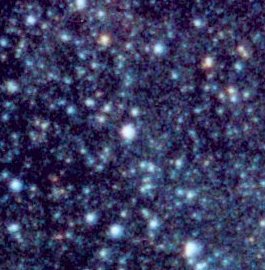
 |
The "luminous blue variable" P Cygni shines at center in a beautiful setting in the middle of the thick Milky Way. Down and to the left are stars heavily reddened by intervening interstellar dust, which absorbs and scatters blue starlight more efficiently than red. The bright "star" just up from the left center edge is the cluster Messier 29. |